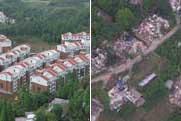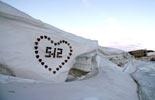World
Iowa carries traditional political weight to 2008 presidential race
Source: Xinhua | 01-03-2008 08:05
WASHINGTON, Jan. 2 (Xinhua) -- Over 300 million Americans and more around the world are closely watching a U.S. Midwestern state with a size of no more than 150,000 square meters and population of less than 3 million where the primaries of the 2008 presidential elections started.
 |
Democratic presidential candidate U.S. Senator Barack Obama (D-IL) speaks during a campaign rally at Friendly House gynmasium in Davenport, Iowa, Jan. 2, 2008.(Xinhua/Reuters Photo)
A total of eight Democrats and seven Republicans who are vying for 2008 presidential candidacy gathered there to grasp the last minute to recruit more votes, while media and political observers are searching for clues that can show who is most likely to win.
Iowa, as it has done in the past over three decades, is exerting its major influence on the U.S. politics as the state kicks off caucuses on Thursday.
The Iowa caucuses started from 1972 as a way to hand out the nominating calendars and mobilize eligible voters. Since 1976, it have become the first candidate-choosing exercise, in which voters discuss their preference for a certain candidate and choose delegates pledged to a particular candidate to go to party conventions.
As many U.S. states attempted to hold earlier primaries or caucuses for bigger impact on the 2008 presidential election, Iowa moved its caucuses date forward to Jan. 3, the earliest in the history, to retain its traditional influence.
Starting 6:30 p.m. CST (0030 GMT), Democratic caucuses begin around the state as voters congregate in schools, churches, libraries and other public places. They first register and review information on presidential candidates and then divide into preference groups for candidates.
To remain "viable" a candidate must have at least 15 percent of the caucus participants. Supporters of non-viable candidates are given the opportunity to realign and support another candidate or abandon the process.
Delegates from the precinct to the county convention are apportioned to each viable preference group according to a formula. Delegates and alternates to the county are then elected by each group.
Following the caucus, the number of delegates committed to each candidate are collected by the state party headquarters and the number of state convention delegates to the national convention is projected.
For Republicans, the caucuses will be 30 minutes later on Thursday and its procedure is comparatively simpler. In years where there are a number of candidates, a straw poll is conducted by secret ballot, instead of dividing into preference groups, to elect delegates to the county convention.
According to the official statistics, about 120,000 to 150,000 Iowans, above 18 years old who can prove residence in the state, are expected to vote in the Democratic caucuses, while 80,000 to 90,000 in the Republican contest. But history records show that only a small number of voters participated in the event.
However, The Iowa caucuses are important for being the earliest test of candidates' behavior, response to pressure, statesman qualities and physical stamina. Strong performance can give candidates momentum and carry them on to additional victories while poor showings usually stop them from move forward with the campaign.
Since 1972 when Iowa began to hold the country's first caucuses, the eventual nominee of each party has been among the top three finishers in Iowa.
Apart from Iowa, a few states include Alaska, Colorado and Hawaii also hold caucuses to pick up party's presidential candidate while most states run primaries starting from New Hampshire.
Editor:Zhang Pengfei



